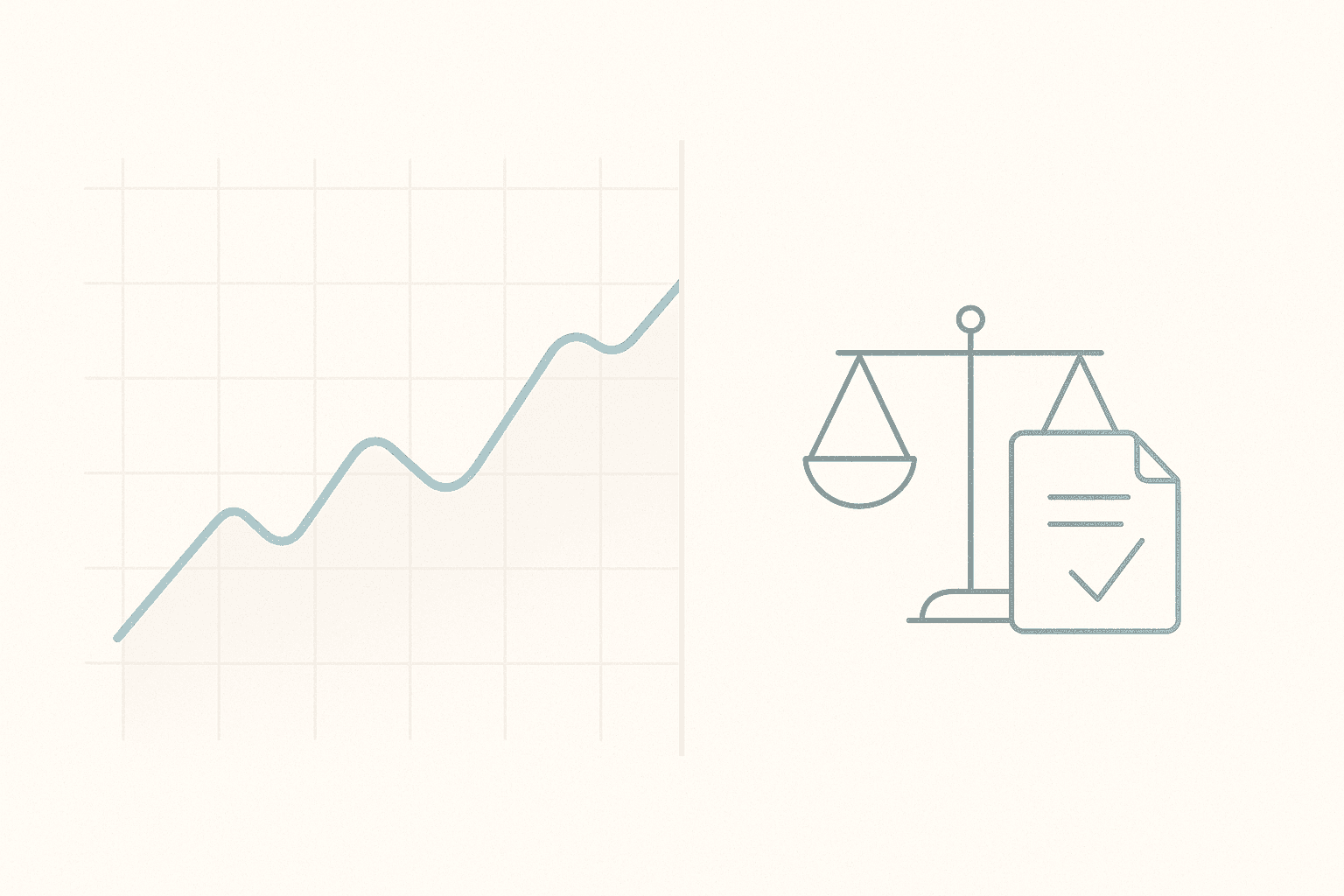AI Lawyer Blog
Service Level Agreement (SLA) Template: Free Download + AI Help

Greg Mitchell | Legal consultant at AI Lawyer
3
A Service Level Agreement (SLA) is the backbone of modern service delivery. It’s a legally binding contract between a service provider and a client that defines performance standards, responsibilities, and remedies if expectations are not met. In 2025, SLAs are essential across industries — from IT and cloud computing to logistics, healthcare, and professional services.
According to ITIC’s 2024 survey, 90% of organizations say one hour of downtime costs $300,000+, with many reporting $1M–$5M+, underscoring the business need for robust SLAs.
Download the free Service Level Agreement (SLA) or customize one with our AI Generator — then have a local attorney review before you sign.
This guide is part of our Web & Technology Agreements series — helping companies protect intellectual property and manage digital partnerships.
You Might Also Like:
At-Will Employment Agreement Template (Free Download + AI Generator)
Employee’s Withholding Certificate Template (Free Download + AI Generator)
1. What is a Service Level Agreement?
A Service Level Agreement (SLA) is a contractual document that defines the expected service performance and quality standards between a provider and a client. It usually outlines specific metrics — like uptime percentages, response times, or resolution deadlines — and details the consequences if those targets aren’t met.
Unlike marketing promises, an SLA is enforceable, creating accountability. Both sides benefit: clients gain assurance that services will meet agreed standards, while providers establish clear boundaries and avoid unrealistic expectations. In sectors like IT, telecom, and logistics, SLAs serve as the framework for trust, consistency, and measurable value.
2. Why Service Level Agreements Matter in 2025?
SLAs are more than compliance — they protect business continuity and relationships. They matter because:
Ensure accountability: Hold providers responsible for measurable performance.
Reduce disputes: Clearly define deliverables and remedies.
Support transparency: Clients know exactly what to expect.
Mitigate risks: Establishes remedies for downtime, service failures, or delays.
Enable competitive advantage: Providers with strong SLAs stand out in crowded markets.
Microsoft 365 services have a financially backed 99.9% SLA; Microsoft has also raised specific workloads to 99.99% — for example, Azure AD user authentication and Teams Phone/Calling.
3. Key Components of a Service Level Agreement
An effective SLA should include:
Parties involved: Service provider and client details.
Service scope: Services being covered and excluded.
Performance metrics: Uptime percentages, response times, resolution times.
Monitoring & reporting: How performance will be tracked and communicated.
Remedies & penalties: Compensation or credits for failing to meet standards.
Exclusions: Conditions outside the provider’s control (force majeure, third-party failures).
Review terms: Frequency and process for updating the SLA.
Dispute resolution: Arbitration, mediation, or jurisdiction.
4. Types of Service Level Agreements
Different industries and contexts use variations:
Customer-based SLA: Covers specific client services.
Service-based SLA: Applies to all clients using the same service.
Multilevel SLA: Combines corporate, customer, and service-specific terms.
Internal SLA: Between departments in the same organization.
Cloud/IT SLA: Covers uptime, latency, and support availability.
5. Step-by-Step Guide to Drafting a Service Level Agreement
Step 1 — Identify services: List all services being covered.
Step 2 — Define metrics: Agree on measurable KPIs like uptime or response times.
Step 3 — Outline monitoring: Specify tools and reporting methods.
Step 4 — Establish remedies: Define credits, refunds, or other penalties.
Step 5 — Include exclusions: Clarify events beyond provider control.
Step 6 — Draft review terms: Define how and when the SLA will be updated.
Step 7 — Get legal review: Ensure compliance with laws and fairness.
Step 8 — Sign and implement: Both parties approve and enforce the SLA.
6. Legal Context and Compliance Issues
SLAs interact with various legal frameworks:
Contract law: Enforceability of promises and remedies.
Consumer protection laws: Especially in digital services.
Data protection laws: GDPR, UK GDPR, and HIPAA require specific service guarantees.
Industry regulations: Telecom, healthcare, and financial services often mandate minimum SLAs.
Noncompliance can result in penalties, reputational harm, or even regulatory investigations.
7. Global Practices in Service Level Agreements
United States: Cloud computing SLAs dominate IT contracts.
European Union: GDPR compliance clauses often embedded in SLAs.
United Kingdom: ITIL framework influences SLA drafting.
Asia: Rapid growth in IT outsourcing drives SLA adoption.
Middle East: Telecom SLAs emphasize uptime for large-scale events.
8. Tips for Drafting Effective SLAs
Be specific: Avoid vague terms like “best effort.”
Use measurable KPIs: Define metrics clients can verify.
Align with business goals: Make sure SLA terms support actual needs.
Review regularly: Update to match evolving services and risks.
Plan for disputes: Include clear escalation procedures.
9. Service Level Agreement Checklist
Parties involved
Service scope and exclusions
Performance metrics
Monitoring and reporting methods
Remedies and penalties
Exclusions (force majeure, third parties)
Review and update process
Dispute resolution terms
Legal compliance clauses
Signatures and dates
Download the Full Checklist Here
10. FAQs
Q: What industries use SLAs most commonly?
A: SLAs are most common in IT, telecommunications, cloud computing, logistics, and managed services. They are also expanding into healthcare and professional services, where performance standards directly affect outcomes. Any industry where measurable service delivery matters can benefit from an SLA.
Q: Can SLAs be enforced legally?
A: Yes. SLAs are contracts, so if either party fails to meet obligations, remedies such as financial credits or damages can be enforced in court. However, enforceability depends on clear language, realistic metrics, and compliance with local contract law.
Q: How often should SLAs be reviewed?
A: Best practice is annually, or sooner if services, technologies, or client needs change. For example, cloud providers often review SLAs quarterly to ensure performance benchmarks match evolving capacity and demand. Frequent review reduces disputes and keeps expectations aligned.
Q: What happens if SLA terms aren’t met?
A: Remedies vary by contract but often include service credits, refunds, or even termination rights. In highly regulated industries, failure to meet SLA terms can trigger regulatory audits or penalties. Effective SLAs balance provider accountability with realistic limitations.
Q: What’s the difference between an SLA and a contract?
A: An SLA is often a part of a larger contract. The contract governs the overall business relationship, while the SLA focuses on service performance metrics. In some cases, SLAs exist as stand-alone documents, but most are integrated into master service agreements.
Sources and References
Information in this guide draws on data from the ITIC 2024 Global Server Hardware, Server OS Reliability Report highlighting the financial impact of downtime on businesses, as well as standards from the International Organization for Standardization (ISO/IEC 20000-1) for IT service management.
Legal and compliance context is informed by the U.S. Department of Commerce, the European Commission GDPR Guidelines, and the UK Information Commissioner’s Office (ICO) for data protection obligations in SLAs.
Best practices also reference frameworks from the IT Infrastructure Library (ITIL) for service management standards, the Federal Trade Commission (FTC) for digital consumer protection, and the National Institute of Standards and Technology (NIST) for cybersecurity and uptime benchmarks in service agreements.
Disclaimer
This article provides general information for educational purposes only and is not legal advice. SLA requirements vary by jurisdiction and industry. Always consult a qualified attorney before drafting or signing a Service Level Agreement.
Get Started Today!
A Service Level Agreement is more than paperwork — it’s the foundation of trust between providers and clients. In 2025, with reliance on IT and cloud services at an all-time high, clearly defined SLAs protect both parties and ensure performance standards are met.
Download the free Service Level Agreement (SLA) or customize one with our AI Generator — then have a local attorney review before you sign.
Explore more resources in our Web & Technology Agreements series to protect your digital assets and partnerships.
You Might Also Like:



